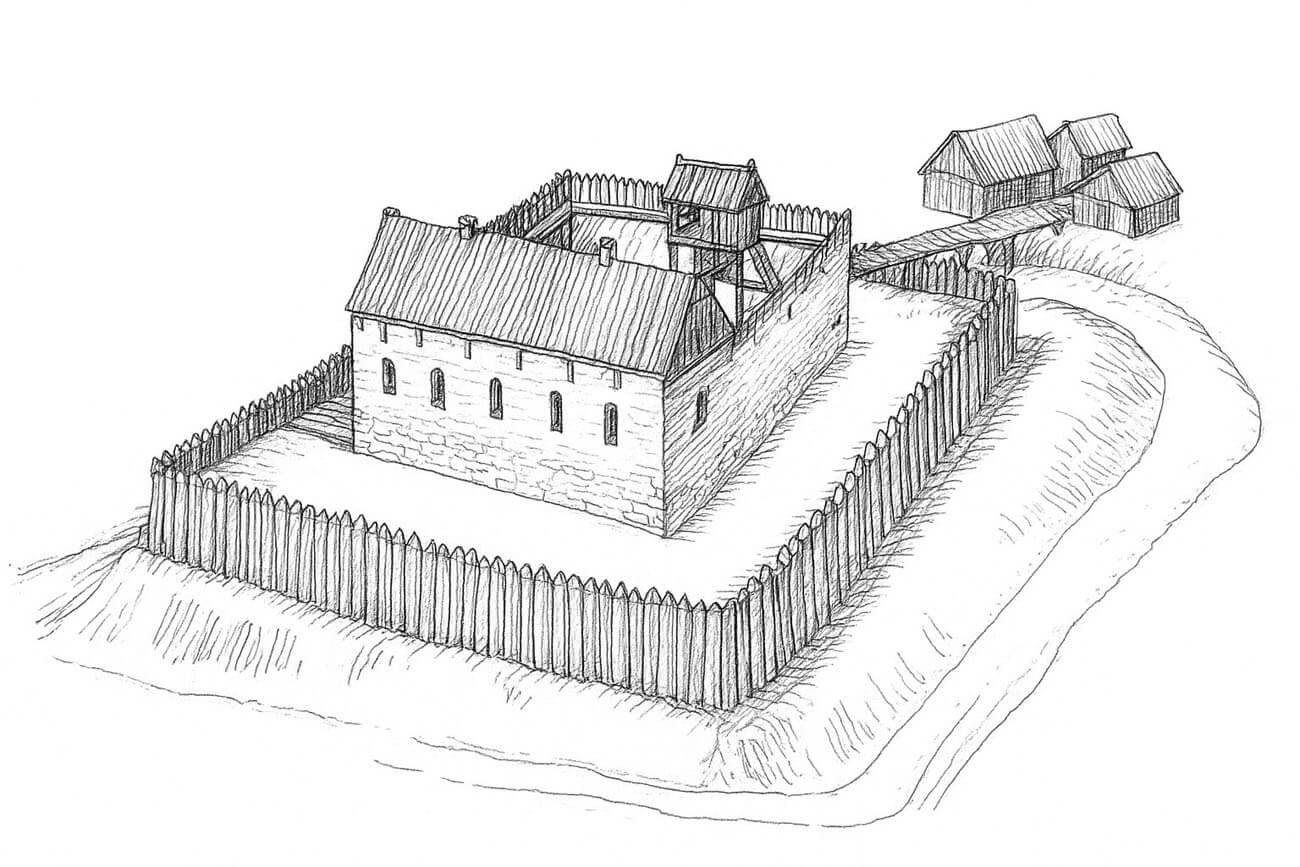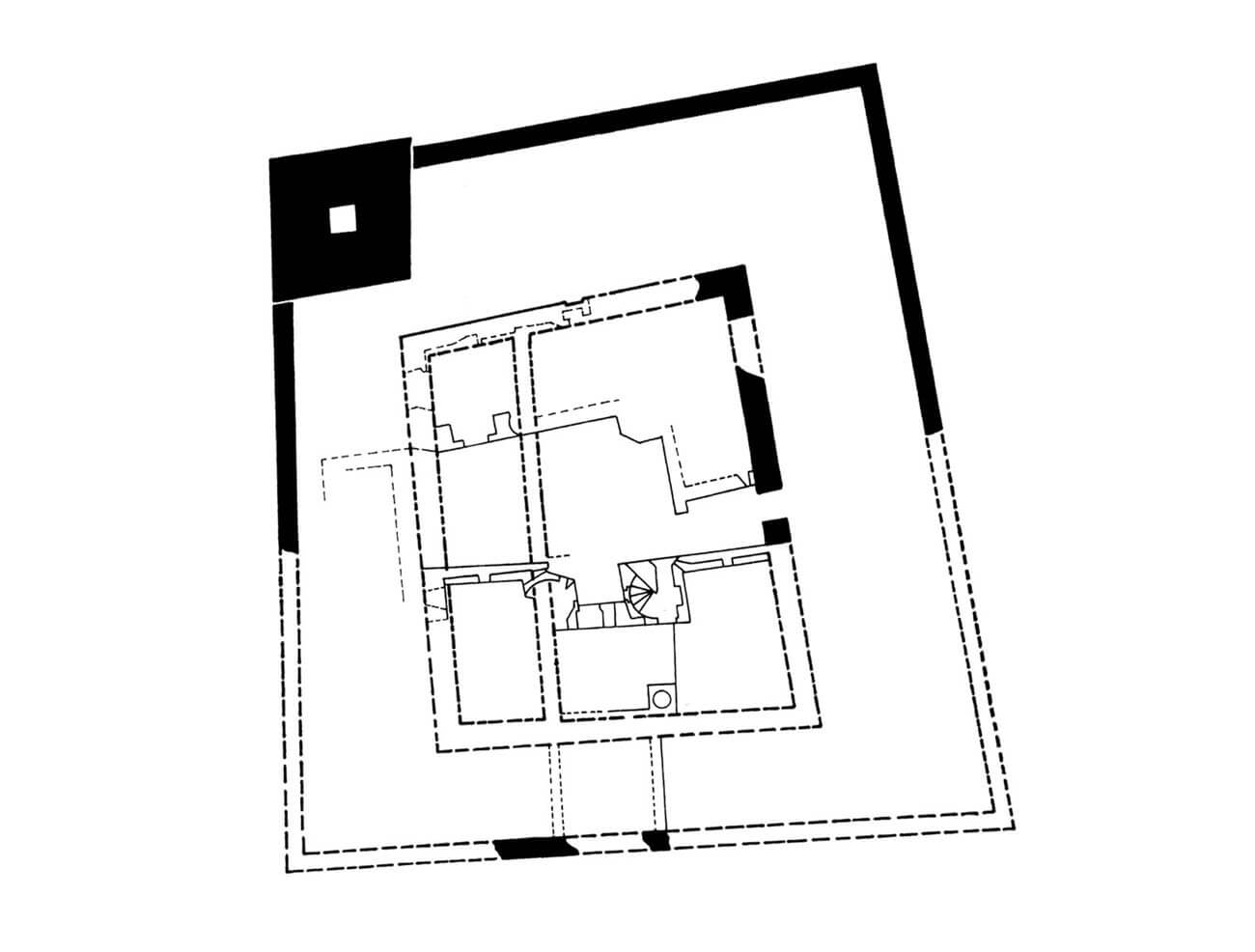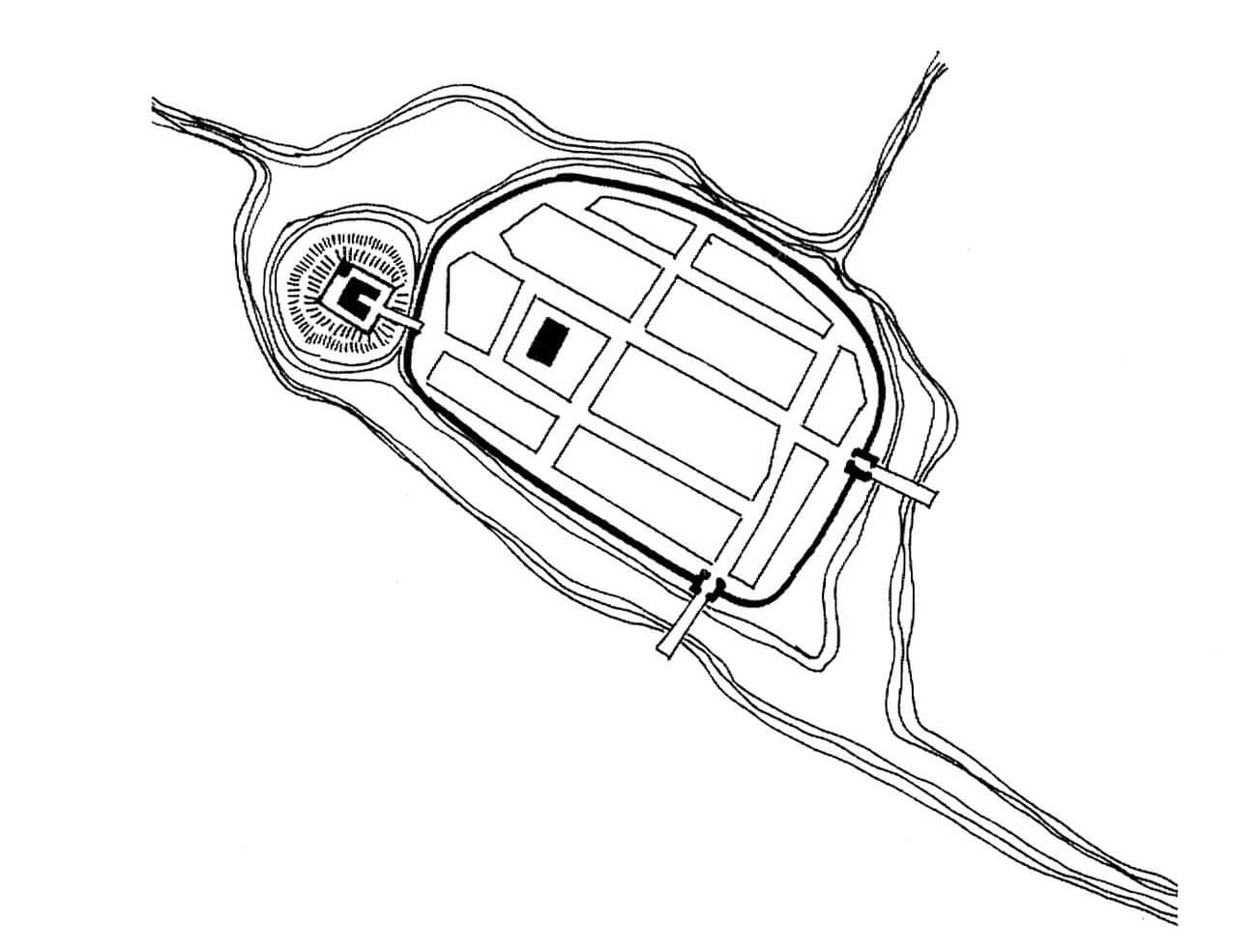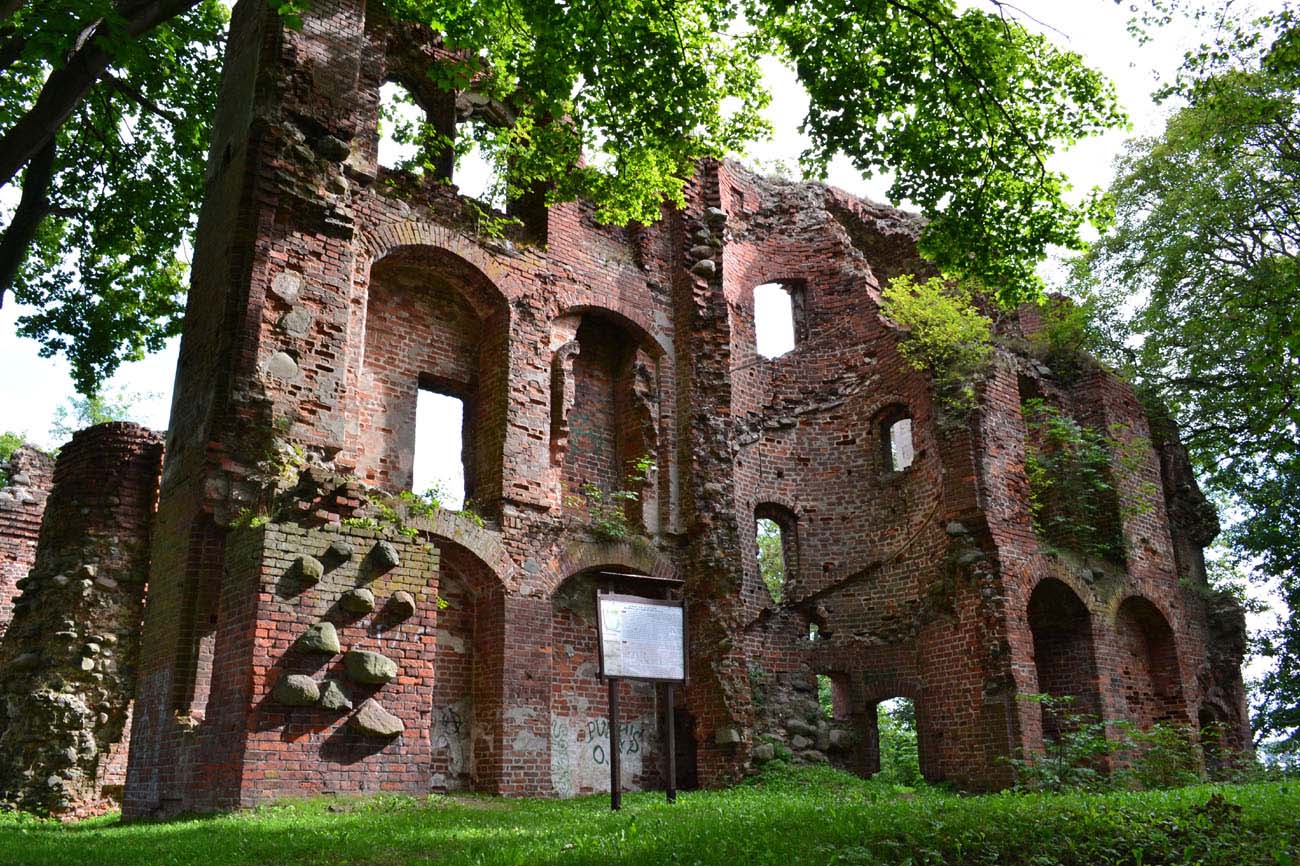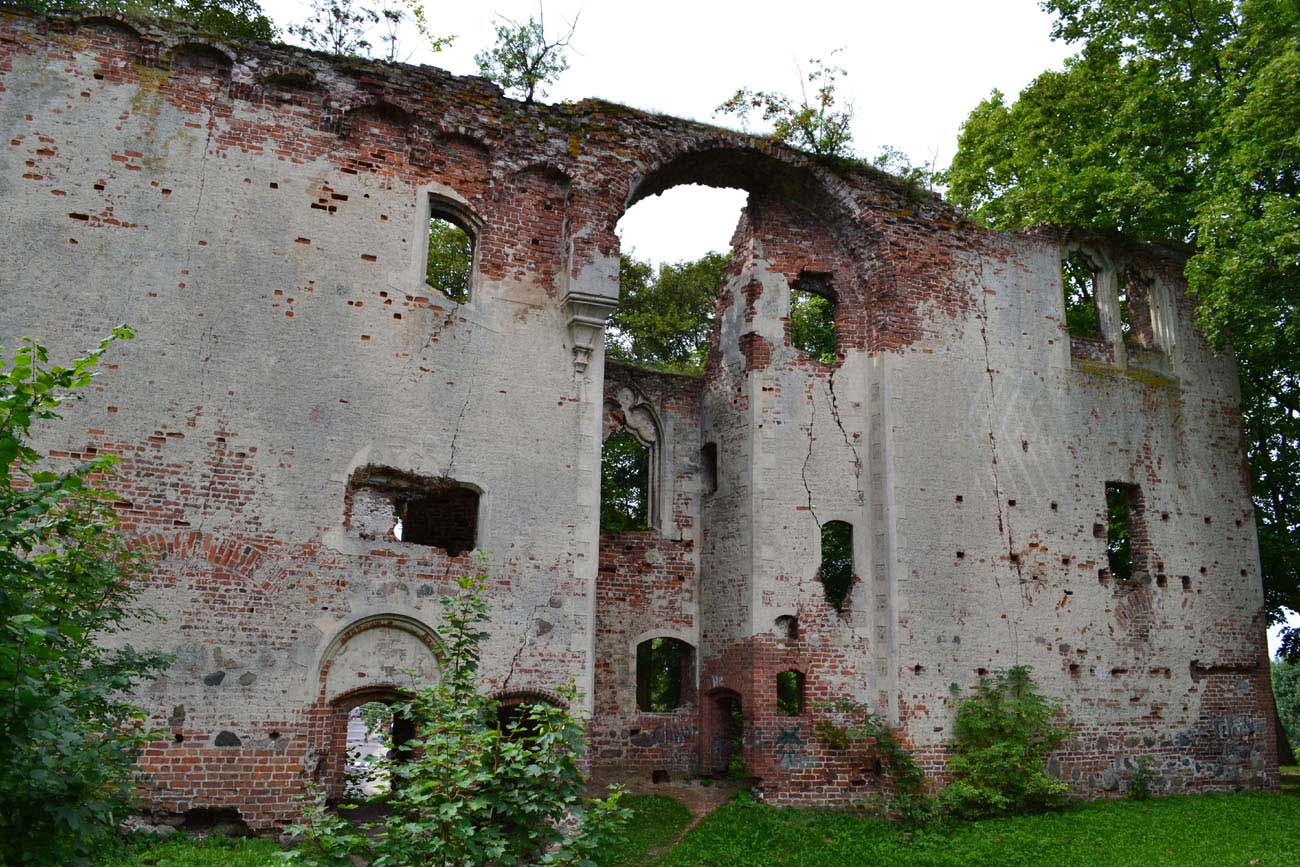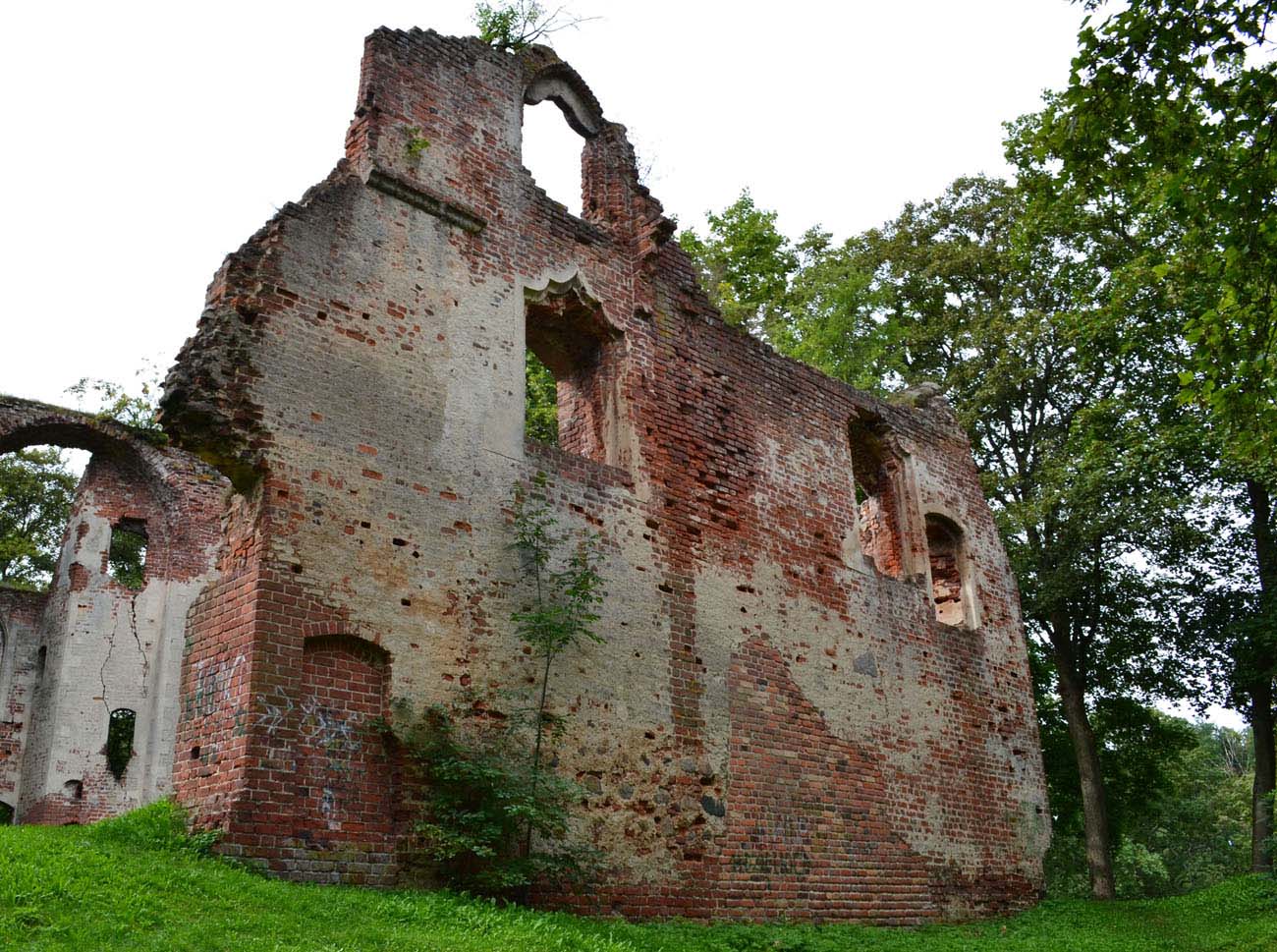History
The building of the castle took place at the end of the 13th century, when the surrounding property belonged to the knight Behr from Meklemburg. In 1308, prince Bogusław IV bestowed the settlement of Dobra to the knight Henry de Dobere from the Heydebreke family, shortly before the invasion of Brandenburgs, who destroyed the newly erected castle. For about next 20 years it was a ruin.
The reconstruction of the castle was carried out around 1338 by Ulryk of the von Dewitz family, who also made a significant enlargement of the stronghold. In 1348, the cousin of Ulrich Dewitz, Otto from Mecklenburg, was honored by Karl IV with the title of count and bestowed with lands in Mecklenburg. With the death of Otto in 1363, his goods were inherited by Gerhard of Dobra, who in 1397 gave them all in pledge to the Dukes of Mecklenburg. Probably, the funds from this agreement were to be used to expand the castle in Dobra. Strengthening the castle was necessary because a year later it was invaded and captured by the army of prince Bogusław VIII of Słupsk. Gerhard recapture part of the lost stronghold and imprisoned the captured crew of the prince. It is known that he imprison them in the undamaged part of the castle, while the part occupied by the prince was ruined.
Thanks to the extension from the turn of the 14th and 15th century, Dobra has become one of the most impressive knights’ castles in the region. It is known that it could have accommodated about 200 knights at the time, which was the equivalent of Bogusław X’s crew, when in 1478 he took refuge in the castle before Elector Albrecht’s forces. However, in the face of the fall of the castle in Szadzko and the considerable preponderance of Albrecht’s troops, additionally equipped with artillery, prince Bogusław signed the peace agreement in Dobra.
Further transformations of the castle, which gave it a renaissance character, took place in the 16th century. Their initiator was Jost Dewitz, one of the most enlightened Pomeranian humanists, chancellor of Filip I of Wolgast. Around 1538, the western wing was pulled down and the redevelopment of the gate wing began. Then the southern wing was raised to three storeys and equipped with staircases. From the second quarter of the seventeenth century, the process of the castle’s collapse began. Destroyed by the Swedes at the end of the 18th century, it was abandoned and ruined. In 1808, the then owner ordered to blow some of the walls to get a building material.
Architecture
The castle was erected on an irregular, six-meter high hill surrounded by marshlands. The oldest building consisted of a western house and a perimeter wall built of brick on a stone pedestal with a height of 3.5 meters. The castle had a plan similar to a square of 30x37x32x34 meters. The gate was located on the axis of the eastern curtain, overlooking the not fortified outer ward, and the south side was facing the town. The western wing had dimensions of 11 x 34.5 meters, that is about 1/3 of the entire castle area.
At the end of the 14th and at the beginning of the 15th century, smaller southern and eastern wings were formed. An external perimeter wall was erected at the foot of the hill, at an average distance of 8 meters from the main walls, with a 12.5 x 11.7 meter tower standing in the north-west corner. The tower was erected about 1 meter in front of the face of the northern walls and merged into the face of the western wall. The thickness of the external circuit was 1.5 meters, while the tower walls were 5 meters thick. The outer wall was about 6 meters high, so it reached the end of the angular part of the tower. The proximity of the tower and west wing made it possible to connect them with a wooden porch, running at a height of 9 meters. Inside the tower, at the very bottom, a square prison dungeon was located with a side length of 2.5 meters, neatly covered with erratic boulders.
From the south, a deep moat separated the castle from the town. The access to the castle probably led from the side of the town through a drawbridge over the moat to the outer ward and from there by a gentle slope towards the gate in the eastern wall of the castle.
Current state
To this day, fragments of perimeter walls, a tower up to a height of 9 meters and ruins of buildings of south and north ranges from the 16th century, have survived. Some late gothic windows closed with curtain arches have been preserved. Some of them were placed in ogival niches with trefoils.
bibliography:
Leksykon zamków w Polsce, red. L.Kajzer, Warszawa 2003.
Radacki Z., Średniowieczne zamki Pomorza Zachodniego, Warszawa 1976.

